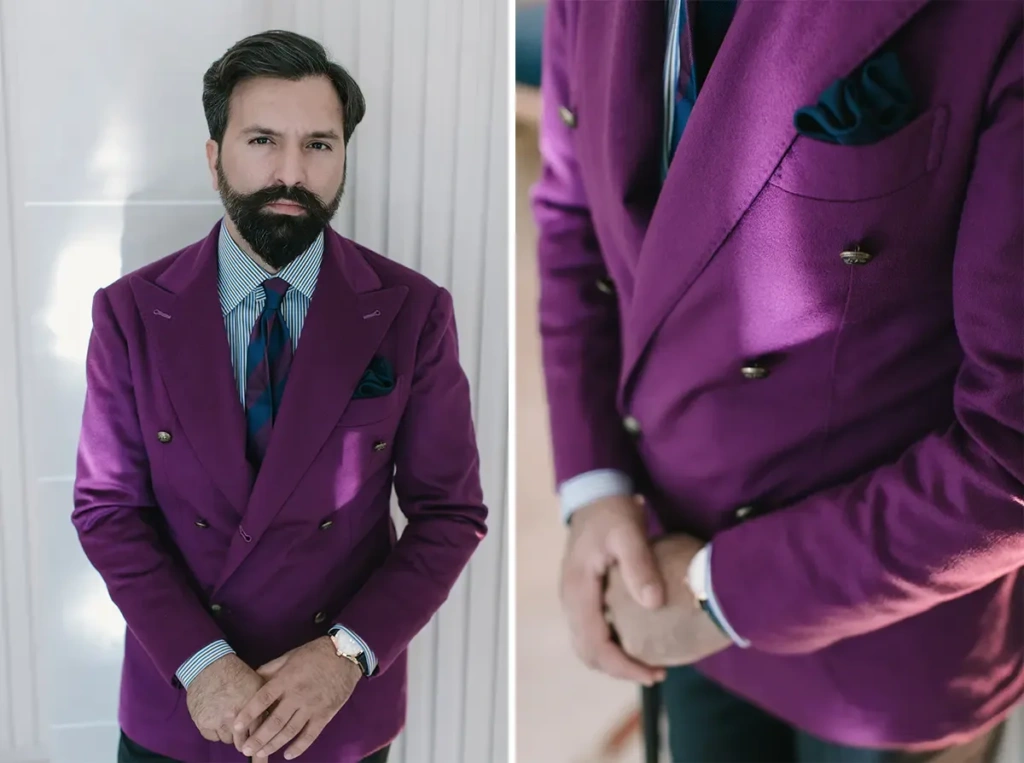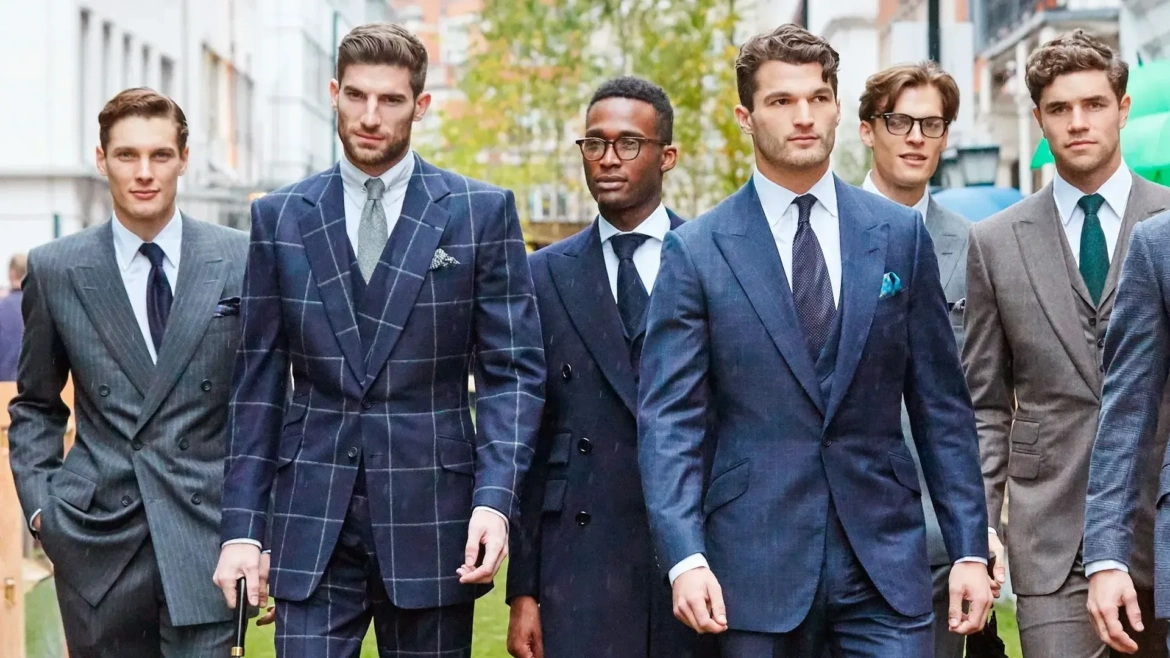A new generation of discerning young men is rediscovering the timeless allure of bespoke tailoring, embracing it not as a relic of the past but as a powerful medium of self-expression. This sartorial renaissance, driven by a blend of nostalgia, digital curiosity, and a reverence for craftsmanship, marks a significant shift in men’s fashion, one that transcends fleeting trends and redefines what it means to dress with intention.

The recent news of James Bond’s cinematic future being handed to Amazon might, in theory, unsettle those of us who hold the art of dressing well in high regard. Historically, the release of a Bond film has catalyzed a surge in suit sales, as audiences are reminded of the transformative power of a well-tailored ensemble. It’s a cyclical phenomenon, one that ebbs and flows with the cultural zeitgeist.
Yet, the current resurgence of interest in tailoring owes little to 007. Instead, it is being propelled by a younger demographic—men who are exploring the sartorial landscape with a fresh perspective and an appetite for individuality. This shift is not merely about wearing suits; it’s about understanding the narrative woven into every stitch, the artistry behind every cut, and the heritage embedded in every garment.

The Ritchie Effect: A Sartorial Legacy
Guy Ritchie, the British filmmaker known for his gritty yet stylish narratives, has long been a purveyor of tailored aesthetics. From the cockney swagger of Lock, Stock and Two Smoking Barrels to the refined elegance of The Gentleman and its television counterpart, Ritchie’s work has evolved into a masterclass in menswear. His films are not just stories; they are showcases of British tailoring at its finest, where costumes often steal the spotlight.
Ritchie’s son, Rocco, has taken this sartorial baton and run with it, emerging as a modern-day style icon. At just 25, Rocco embodies a mastery of proportion, color coordination, and silhouette that rivals the greats of menswear history. His wardrobe, a harmonious blend of classic tailoring and contemporary flair, pays homage to the legacies of Tommy Nutter, Yves Saint Laurent, and Alexander McQueen. Unlike many of his peers, Rocco eschews the influence of stylists, opting instead to curate his looks with an intuitive understanding of style that feels both personal and profound.

The Next Generation: From Scions to Style Icons
The offspring of fashion-forward families often inherit a penchant for dressing well, but their approach tends to skew toward casual irreverence—think trainers paired with tailored trousers or graphic tees under blazers. The Beckhams, for instance, have mastered this balance, though their father, David, remains the undisputed king of their sartorial realm.

Lennon Gallagher, son of Oasis frontman Liam Gallagher, represents a different facet of this generational shift. As the face of Burberry in 2023, Lennon has embraced a modernist aesthetic that contrasts sharply with his father’s bohemian leanings. Meanwhile, Earl Cave, son of musician Nick Cave, channels his father’s signature dark, minimalist tailoring, proving that the apple doesn’t fall far from the tree—even as it carves out its own distinct identity.
This younger generation is not merely replicating the styles of their forebears; they are reinterpreting them. In an era where their fathers might favor streetwear over Savile Row, these young men are gravitating toward the polished elegance of traditional tailoring, drawing inspiration from the wardrobes of their grandfathers and the golden age of menswear.
The Digital Catalyst: Social Media and Sartorial Discovery
Social media has played a pivotal role in this revival, serving as both a catalyst and a curator of sartorial curiosity. Platforms like TikTok and Instagram have become virtual ateliers, where users dissect the nuances of vintage tailoring, share styling tips, and celebrate the artistry of bespoke craftsmanship. A recent video showcasing nearly obsolete garments garnered 4 million views, with 60% of viewers under the age of 34, a testament to the enduring appeal of classic style.
Zack Pinsent, a 30-year-old tailor with nearly a million followers across social media, exemplifies this trend. His Regency-inspired creations have captivated audiences, transforming tailoring into a form of storytelling that resonates deeply with a generation eager to connect with the past while forging their own sartorial identities.

The Kingsman Effect: Bridging Cinema and Craftsmanship
The Kingsman franchise, while not a cinematic masterpiece, has been a marketing triumph for British tailoring. Its portrayal of bespoke suiting as both aspirational and accessible has left an indelible mark on popular culture. Huntsman, the storied Savile Row tailor featured in the films, has seen a surge in interest from young men eager to take their first steps into the world of bespoke.
Taj Phull, Managing Director of Huntsman, notes that this new wave of clients is not only interested in wearing bespoke garments but also in understanding the craft behind them. “We’re seeing a younger generation of Middle Eastern men who want to commission pieces from the same tailor as their fathers,” he explains. “There’s a genuine appreciation for the heritage and artistry involved.”
This sentiment is echoed by Terry Haste, a legendary cutter on Sackville Street, who has observed a growing demand for apprenticeships and bespoke commissions among younger men. “They’re not just looking for suits,” he says. “They want versatile separates that reflect their lifestyle while maintaining a connection to tradition.”
The Future of Tailoring: A Legacy Reimagined
While the future of James Bond may be uncertain, the future of tailoring is anything but a new generation, fueled by digital discovery and a deep respect for craftsmanship, redefining what it means to dress well. They are not merely imitating the past; they are reinterpreting it, blending tradition with innovation to create a style that is uniquely their own.
This sartorial revival is more than a trend, it’s a movement. It speaks to a broader cultural shift toward authenticity, individuality, and a renewed appreciation for the artistry of clothing. As these young men step into the world of bespoke tailoring, they are not just wearing garments; they are carrying forward a legacy, ensuring that the art of dressing well remains a vibrant and evolving tradition.

In the words of Huntsman’s Taj Phull, “If there was no demand, we wouldn’t do it. But this generation is truly passionate.” And in their hands, the future of tailoring looks brighter than ever.
